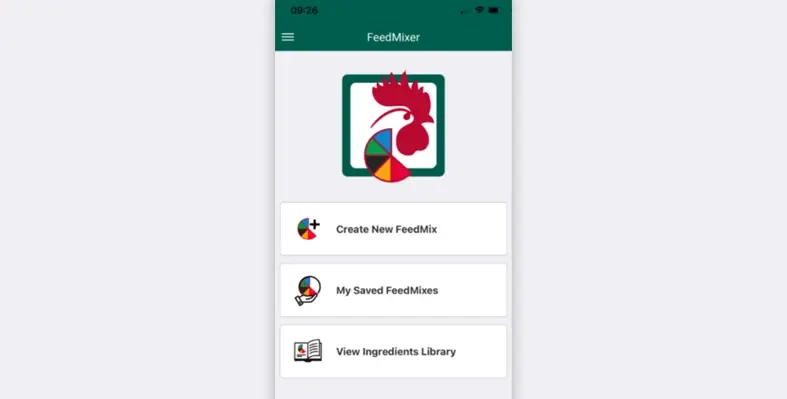In an attempt to make optimal poultry nutrition easier, while also helping farmers save money and improve profits, a free mobile app called the FeedMixer App was designed by poultry nutrition experts at the Poultry Science Department at the University of Georgia in the US
Rising commercial feed costs as well as limited grain supply is urging poultry farmers in Sub Saharan Africa and most regions around the world to self-mix their chicken feed. However, a majority of farmers lack adequate knowledge, causing them to fail at achieveing the right balance of grains, oils and other available ingredients needed to ensure optimal nutrition for different types of birds at different stages.
The new FeedMixer App, a relaunch of an older version of the app, makes feed mixing easier by calculating whether the feed mixtures farmers use contain the right balance of key nutrients, by age, type of chickens, and available ingredients.
Sean Chen, assistant professor/extension specialist at the Department of Poultry Science at the University of Georgia highlighted how farmers are often unaware of the fact that the nutrient needs of chicken may vary depending on the stage of life they are currently in, which is why broilers and layers for example, would need to be fed differently. Selecting the appropriate feed components would therefore be essential for optimising bird health and productivity, while at the same time minimising resource wastage.
"We feed various types of feed mixes to different breeds of birds because different breeds have distinct characteristics and purposes," said Chen. "For instance, broiler chickens are primarily raised for meat production. These chickens grow rapidly and require a diet supporting muscle development and efficient feed conversion into meat. Broiler chickens need feeds rich in proteins, carbohydrates, and fats to ensure optimal growth and flavourful meat production. On the other hand, laying hens are specifically bred to produce a consistent supply of eggs. They require a different set of nutrients to support their reproductive system and the formation of solid eggshells. Their diet should include adequate proteins, vitamins, minerals, and calcium to support strong eggshell and egg production."
Maureen Stickel, director of the International Programme Development at the World Poultry Foundation also underscored how the app would help guide farmers who might have trouble accessing traditional feed ingredients such as soy or corn due to cost or local availability.
Users simply click on the type of chickens they are feeding, and select the ingredients they have available to them, such as maize, cassava, oil, bran, soybean meal, fish meal, and salt, in the proportions they intend to blend. The app will indicate whether their chosen feed mix delivers adequate energy, protein, fibre, vitamins and minerals to efficiently nourish the birds without wastage. Users can input the cost of the ingredients they use, to calculate whether their feed mix is cost effective, and they can save their own feed mix formulas in the app for future reference.
To make it convenient for users, the app is currently available in a number of languages including English, French, Spanish and Portuguese. It also offers useful content and resources such as preloaded feed mix examples for different types of birds, and diet guidelines for each breed and age of bird.





